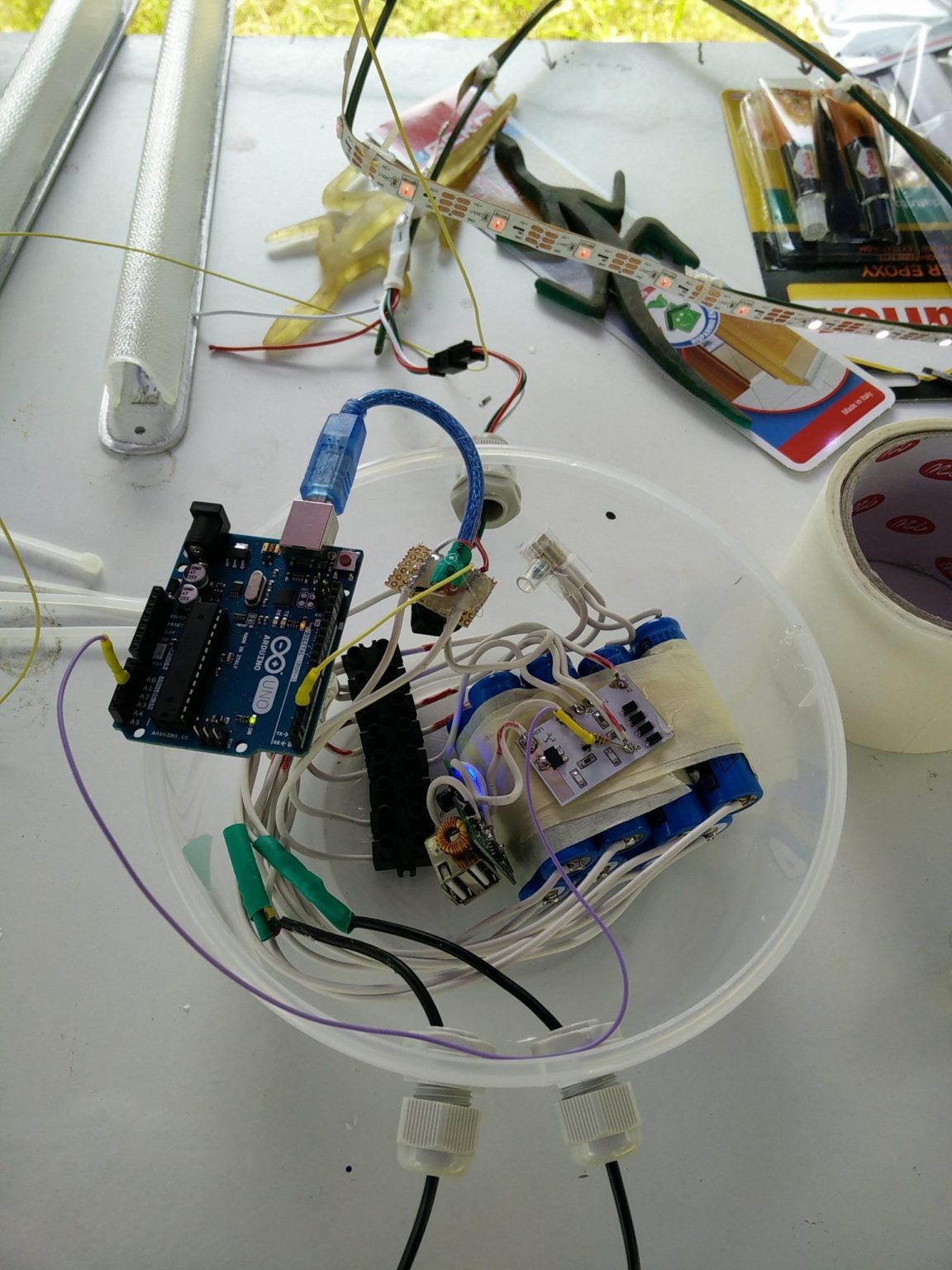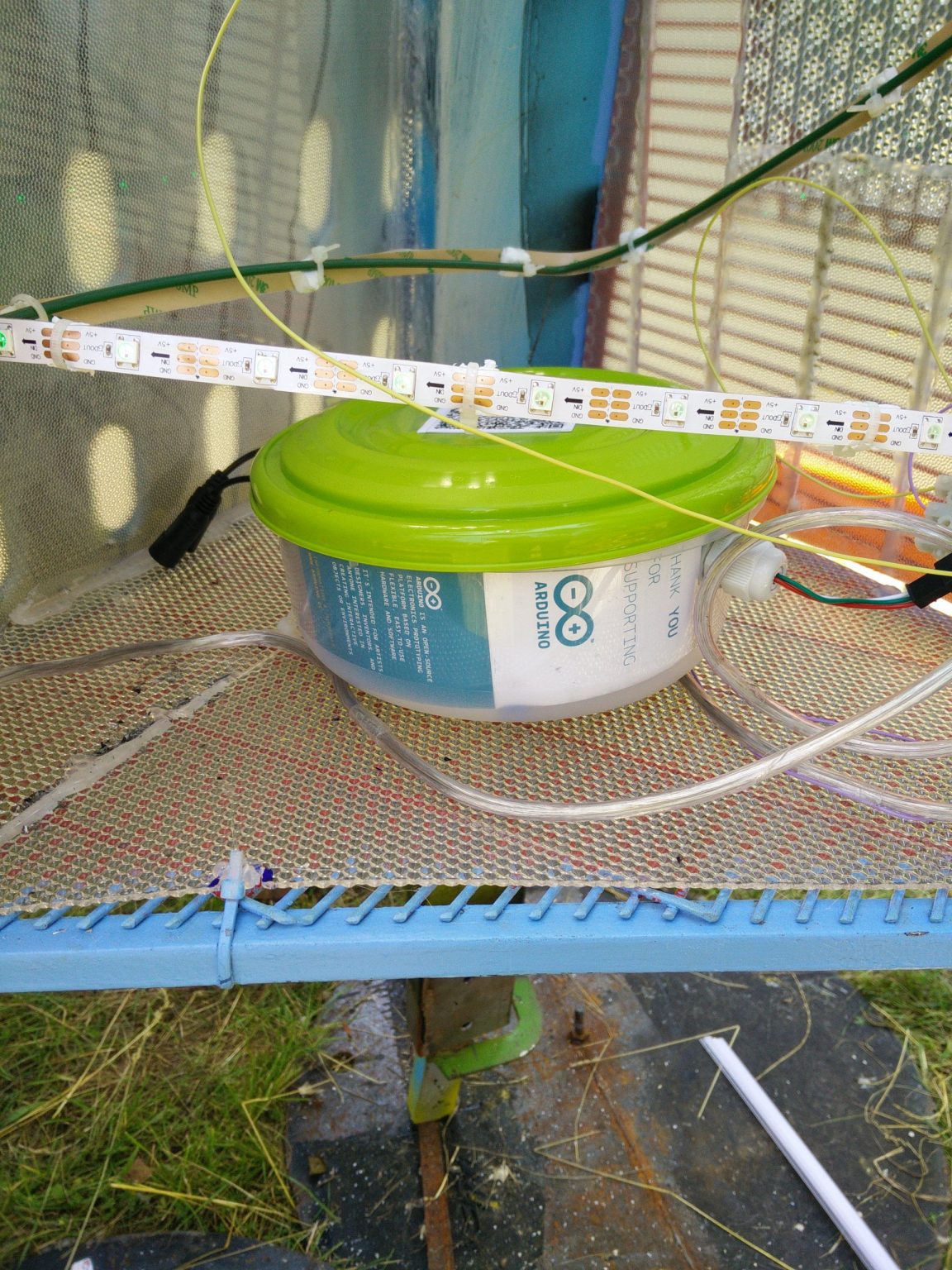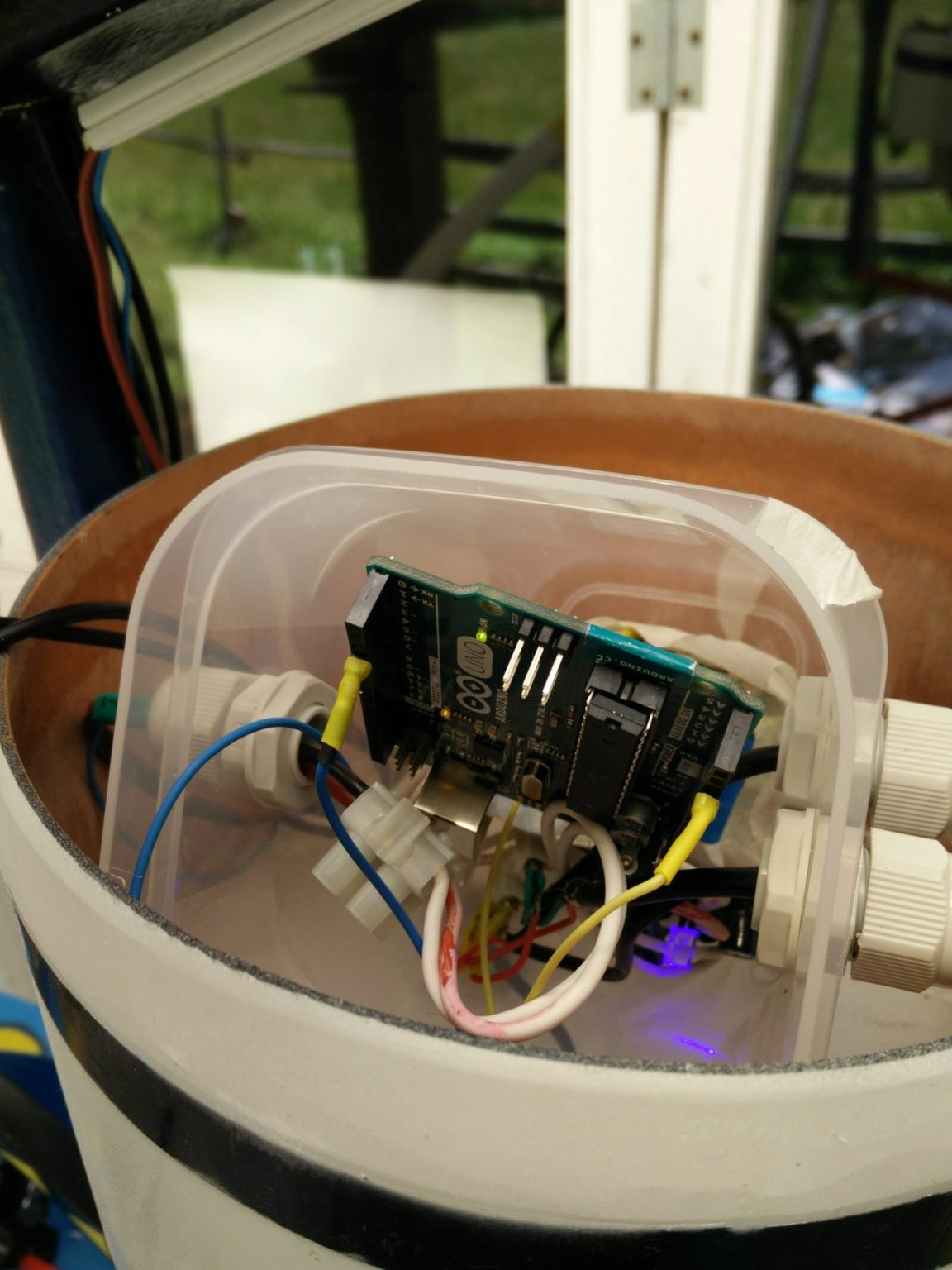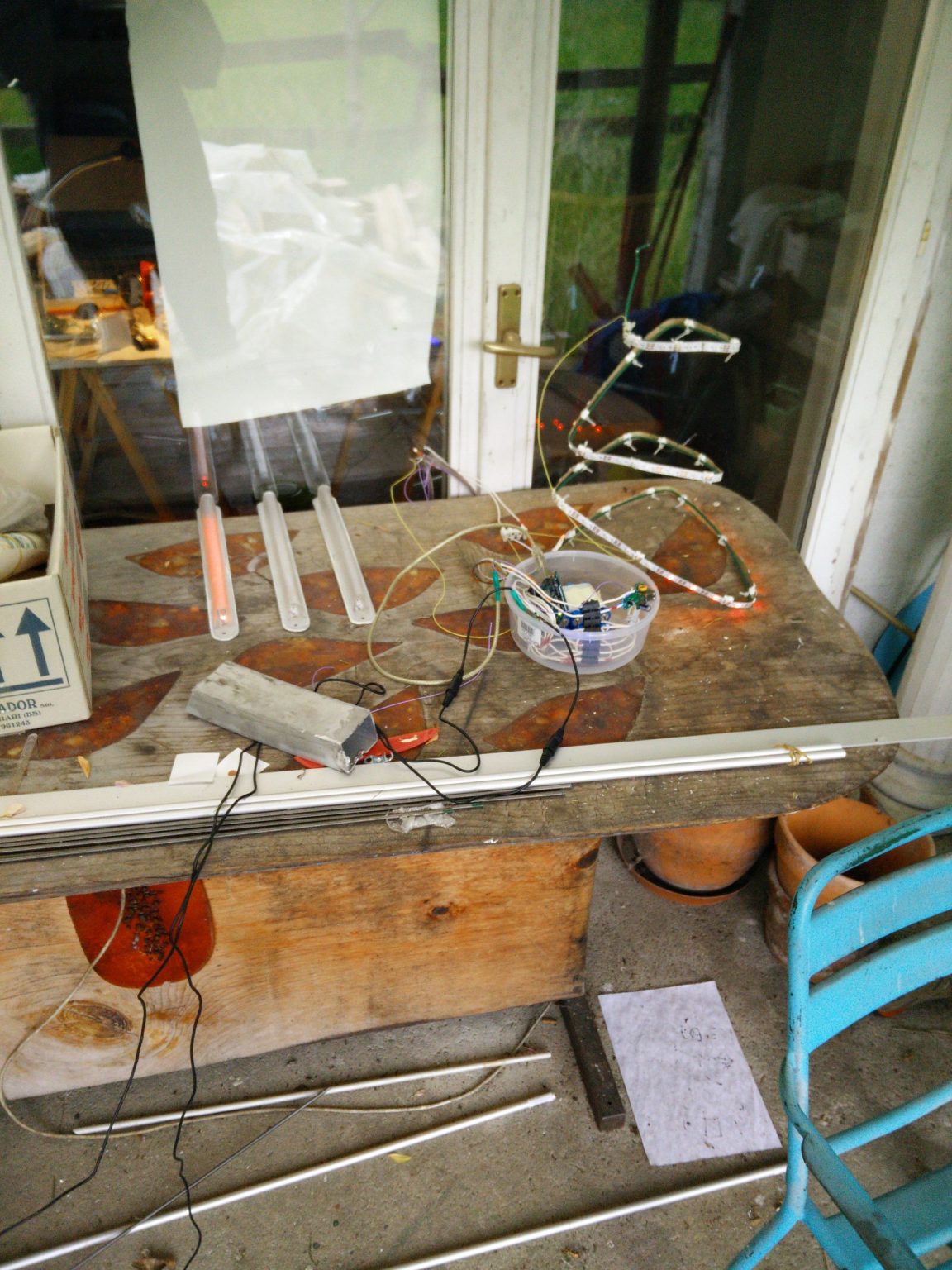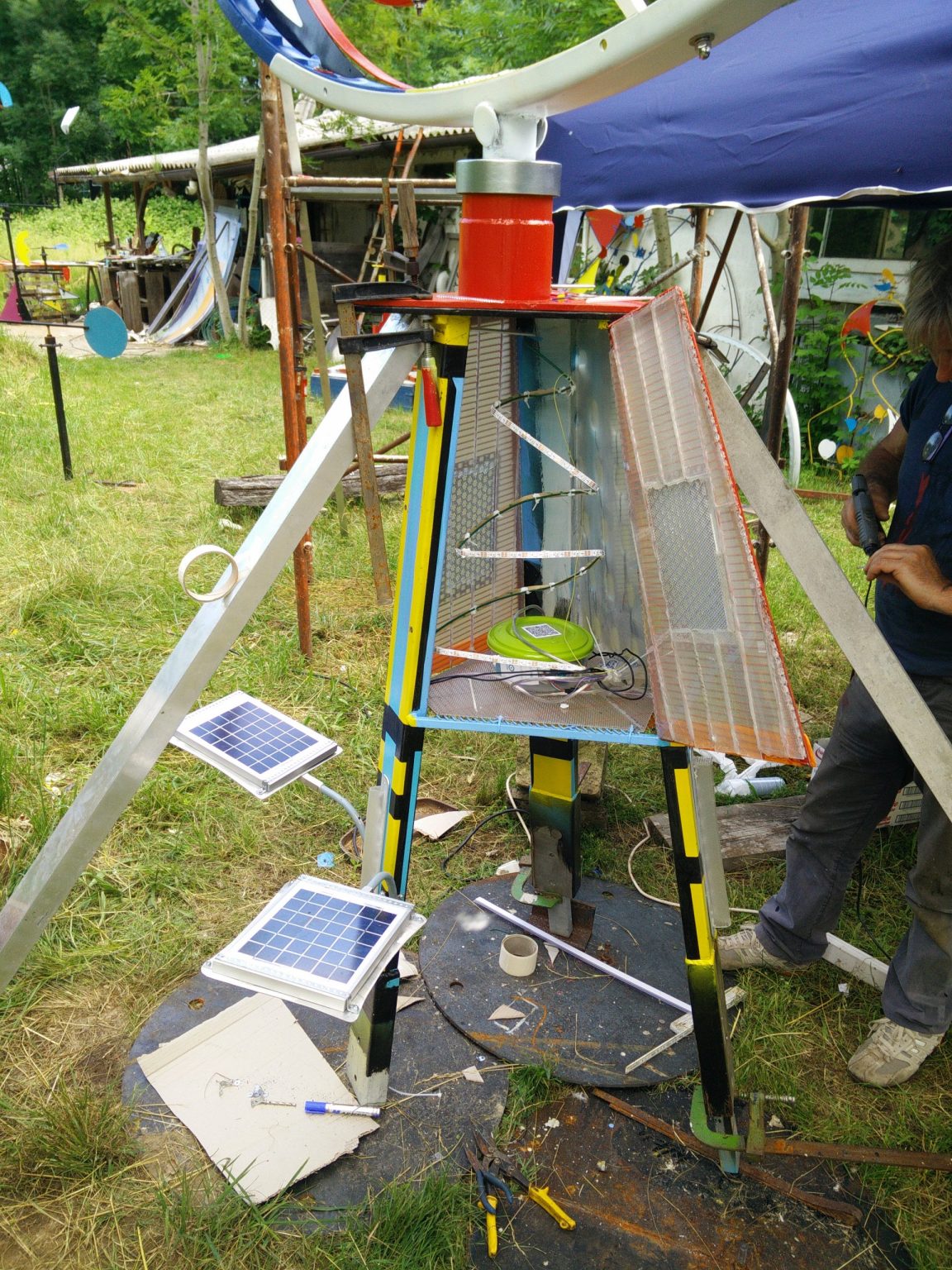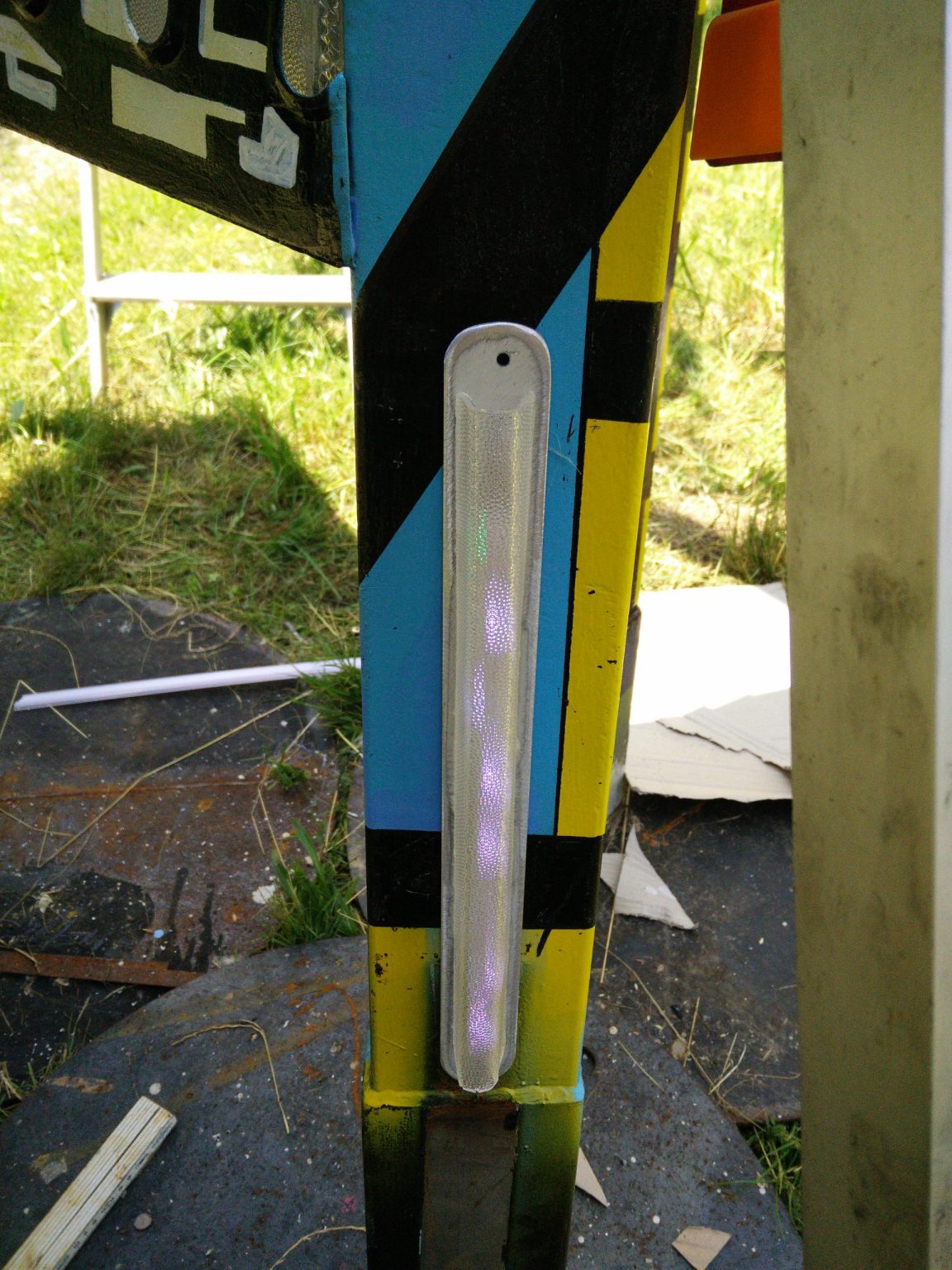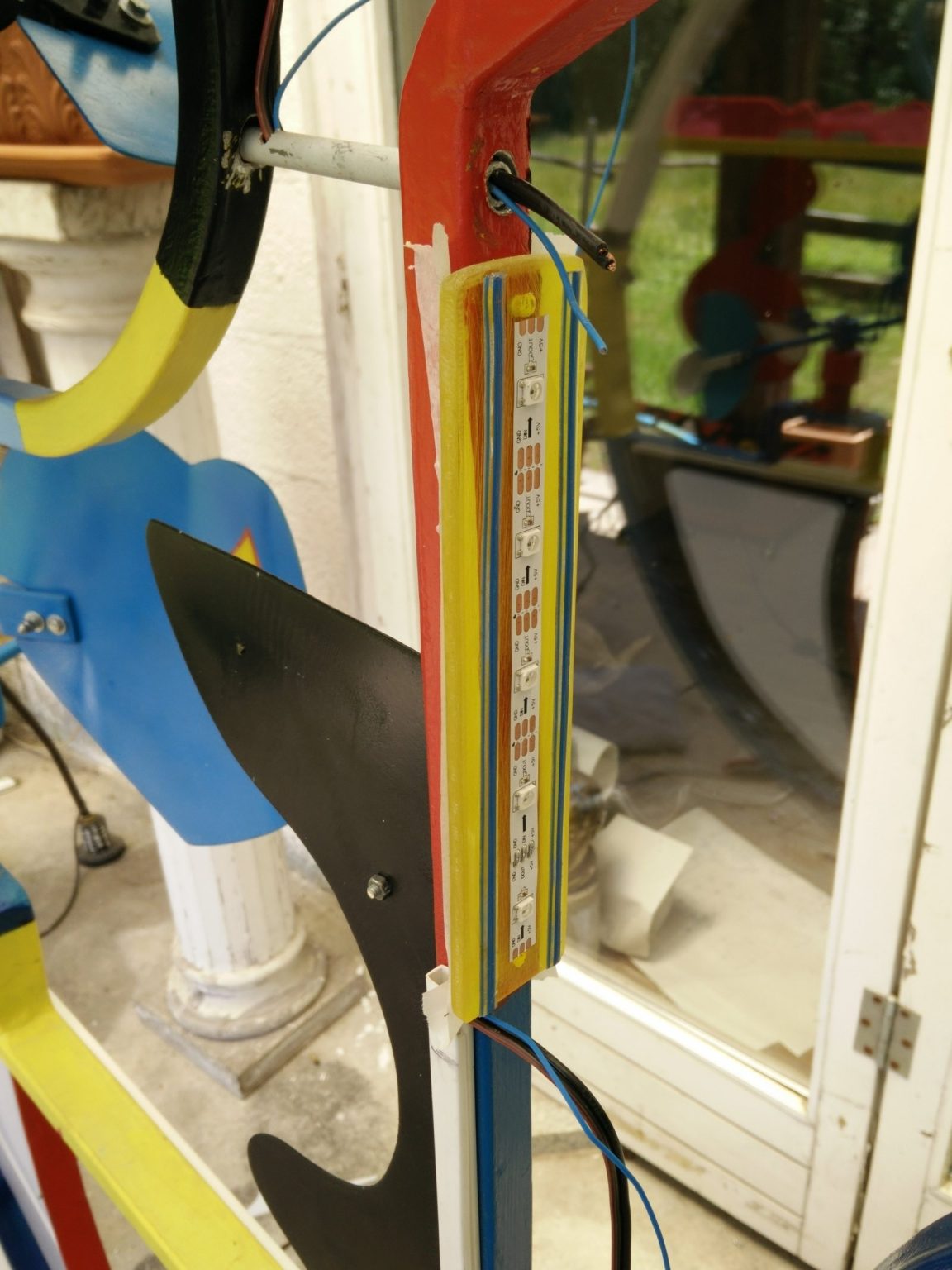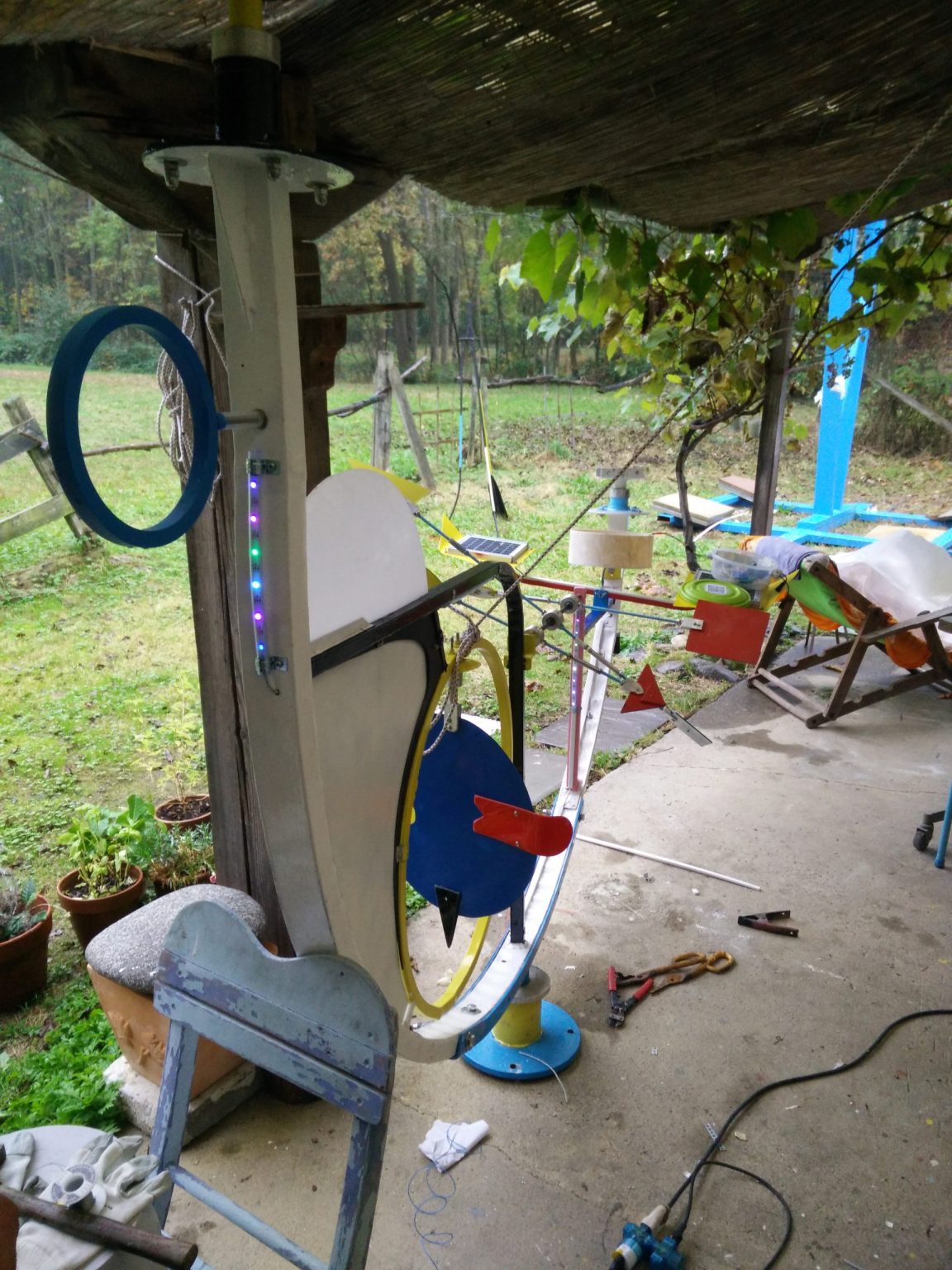Aeolic sculptures by Claus Joans
Adding an electronic soul to the eolic kinetic art of Claus Joans
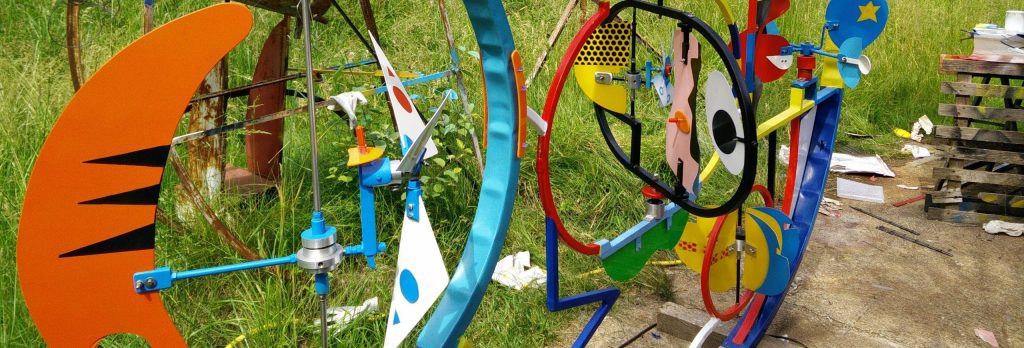
Customer:
Claus Joans
Challenge:
The eolic sculptures take power from wind, but usually at night there is no wind. Claus asked me to add something that would show at night and this is why I developed solar powered LED animations over a set of strips integrated in the structure, active from dusk to dawn.
Year:
2015-2016
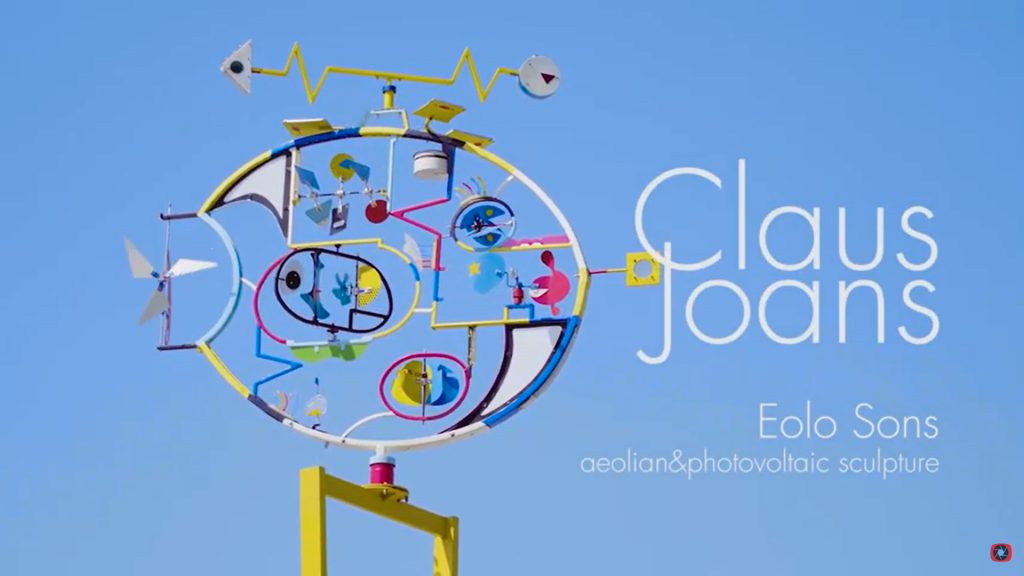
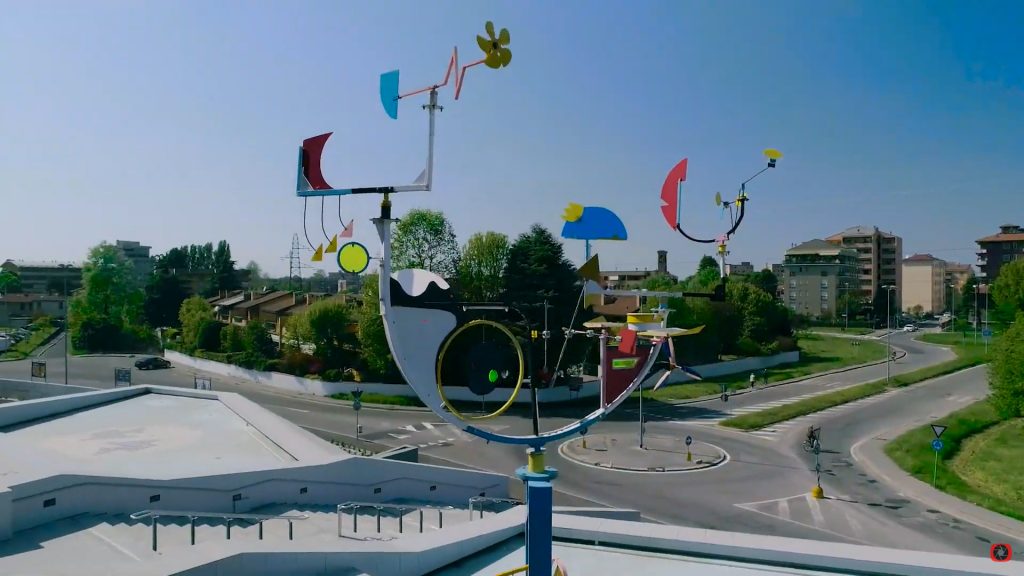
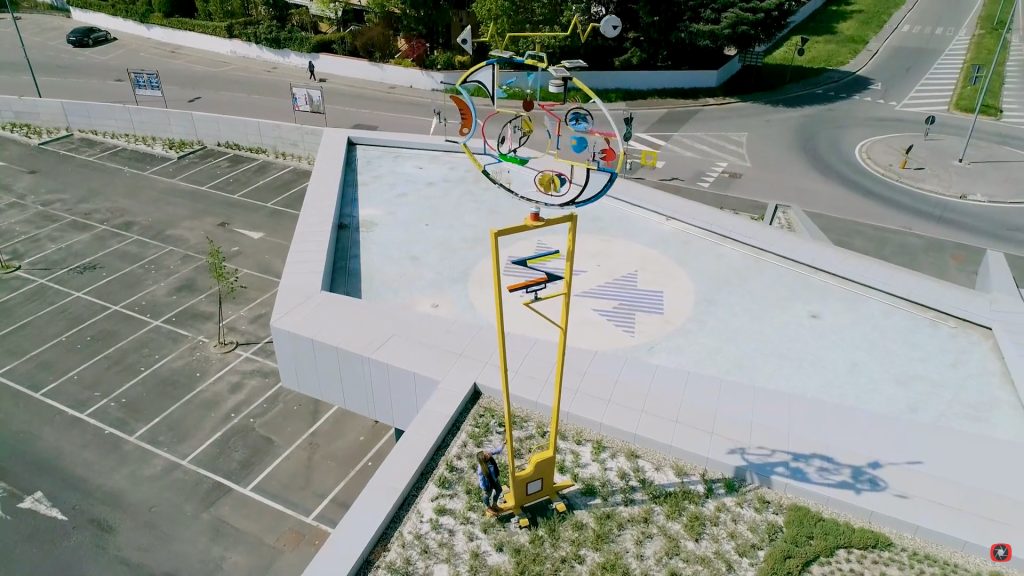
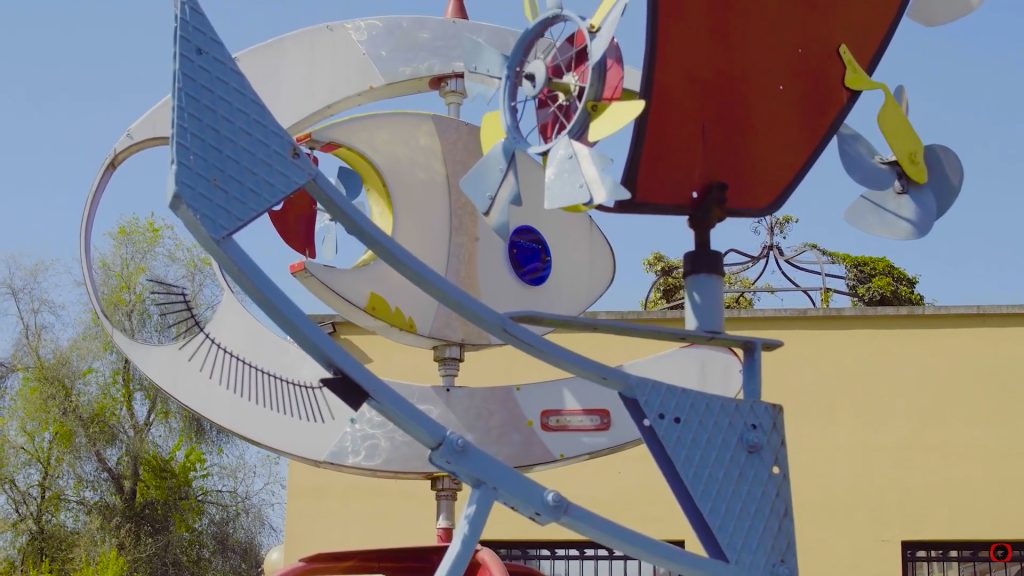
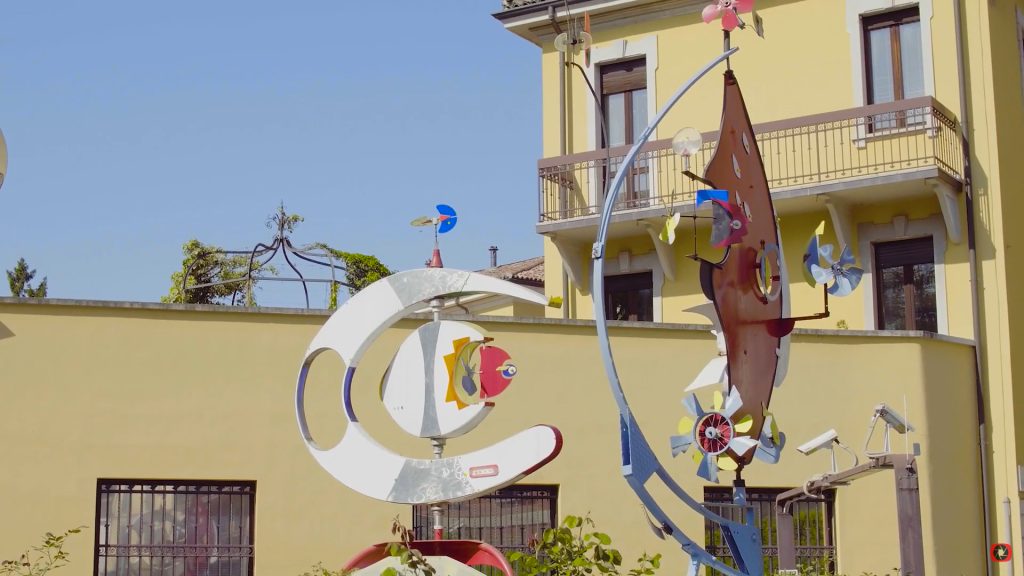
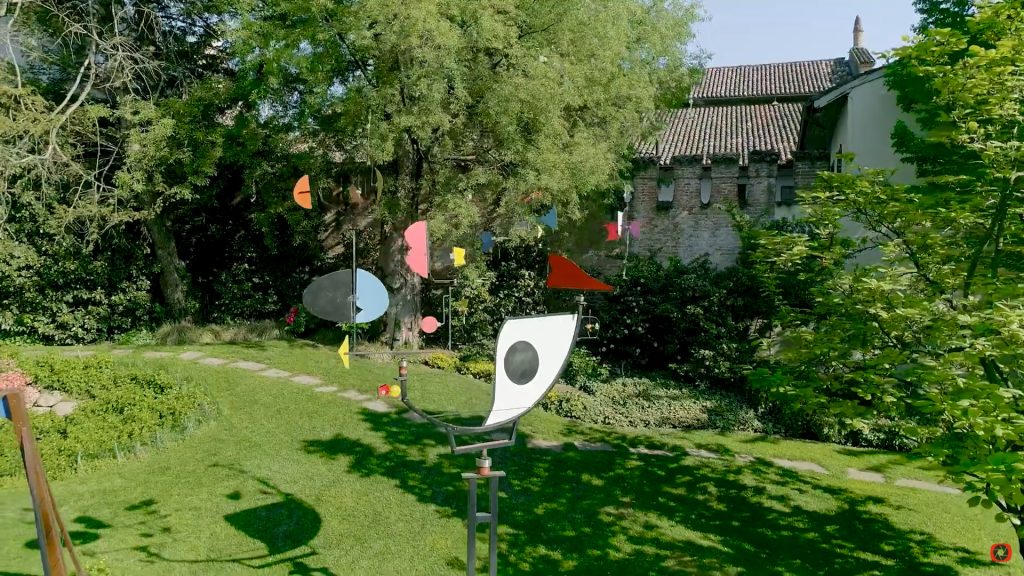
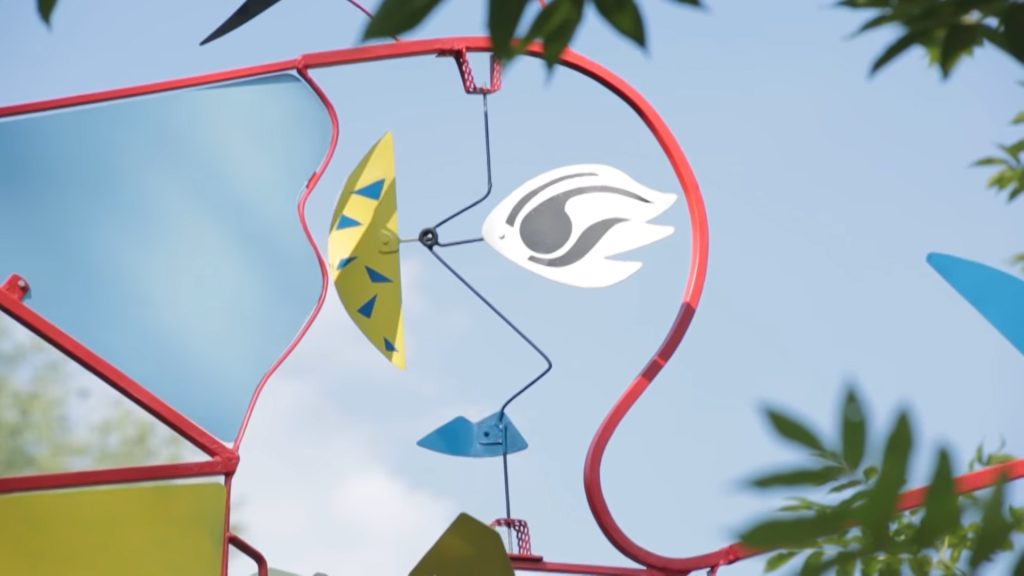
True craftsmanship
When I first met Claus Joans, it was in front of a drink at Le Trottoir. I was introduced to him by my dear friend Mario Magrone. Le Trottoir was “the place” for the true artists of Milan. This historical building had art everywhere: on the walls, on the tables, on the ground and first floor. In the evening live music was played by emerging groups and if you were in the surroundings of Navigli, that was one special place among many more regular bars and pubs.
Mario knew Claus well and he introduced me saying that I could add to Claus’ art something more, something special because I was a maker.
Before starting the collaboration, I visited Claus’ place on a hill in Borgomanero a few times, learning how he used to work and how he was possessed by creativity while working on his pieces disregarding safety or dangers. He handled the plasma torch creating amazing patterns often forgetting to wear protective goggles. He had no time to waste on finding and wearing personal protective equipment when using the grinder, but he was so used to the tools that he really knew how to stay safe just by wearing gloves.
His raw materials were steel, aluminium, iron, polycarbonate and paints. He fabricated almost all the parts, only buying bushings, ball bearing and screws to assemble and support the parts that were moving under even a gentle breeze.
Claus started with a sketch on his precious big notebook, then he went on with the manufacturing and assembly of the main structure, shaping it according to the sketch.
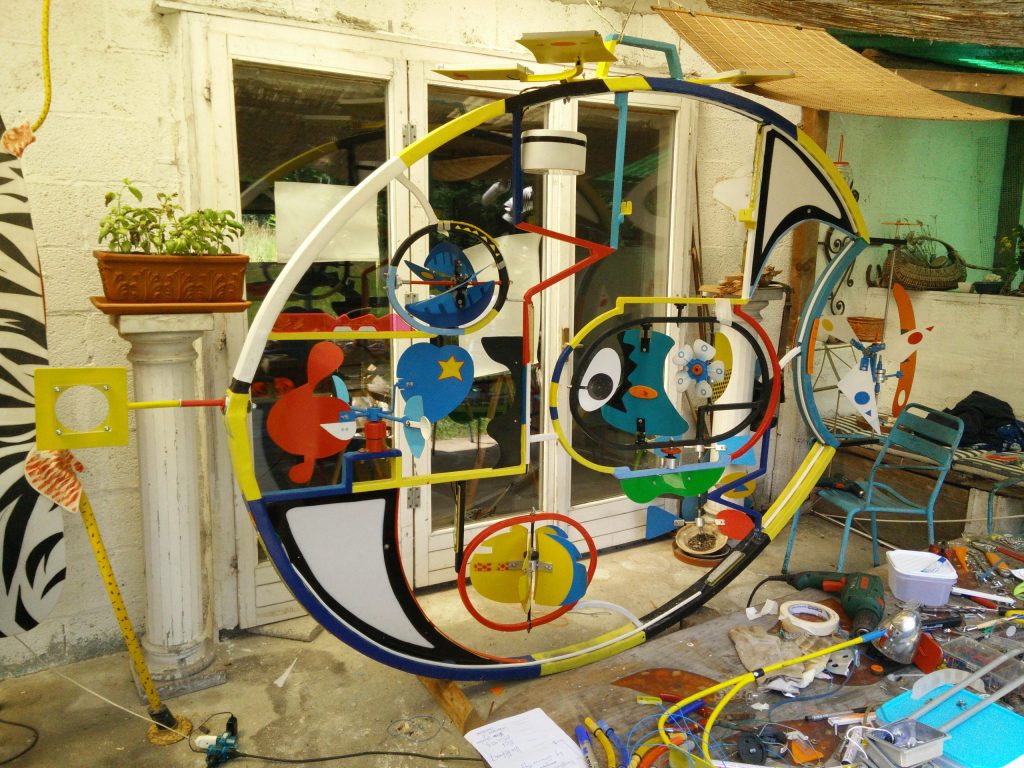
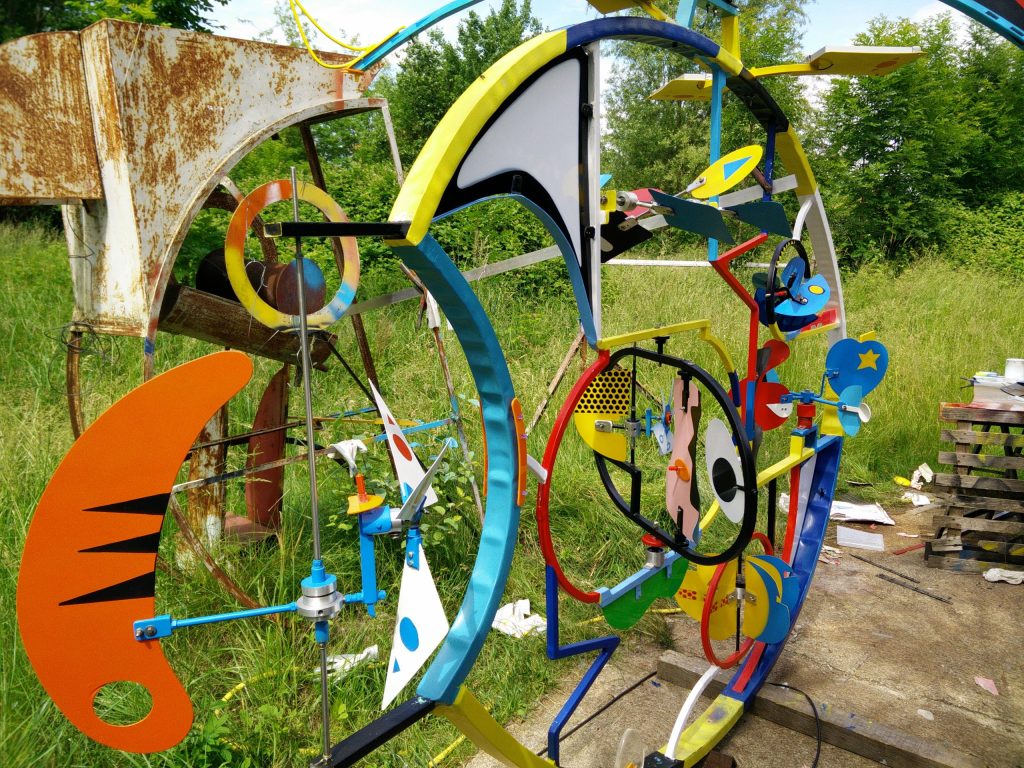
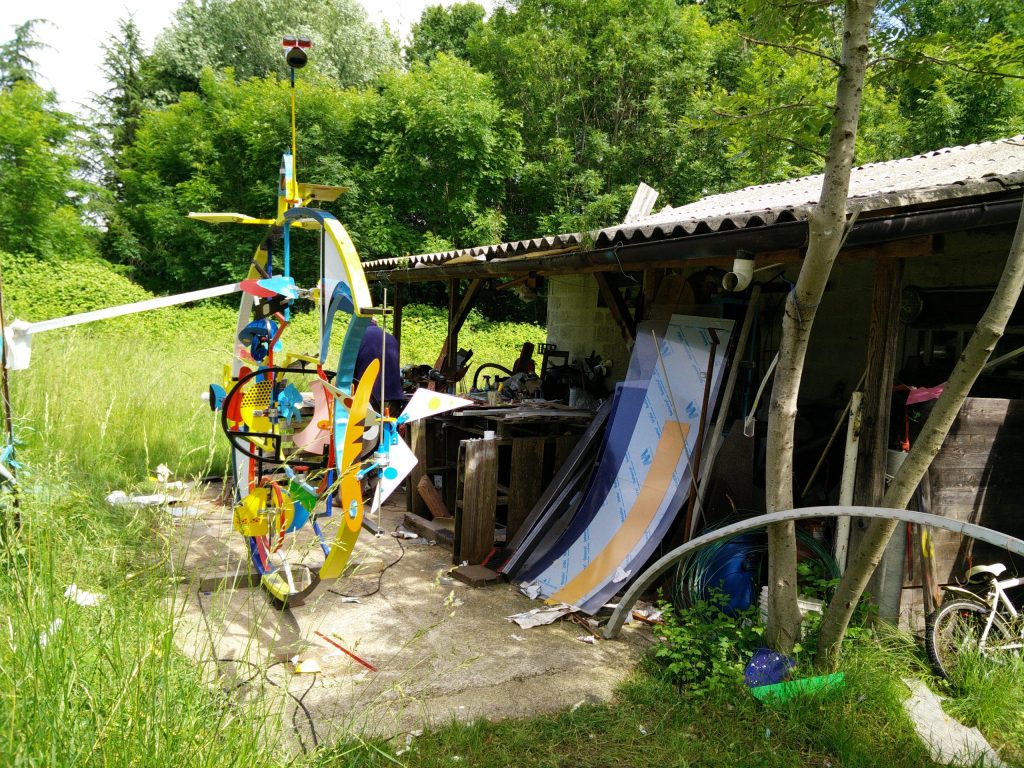
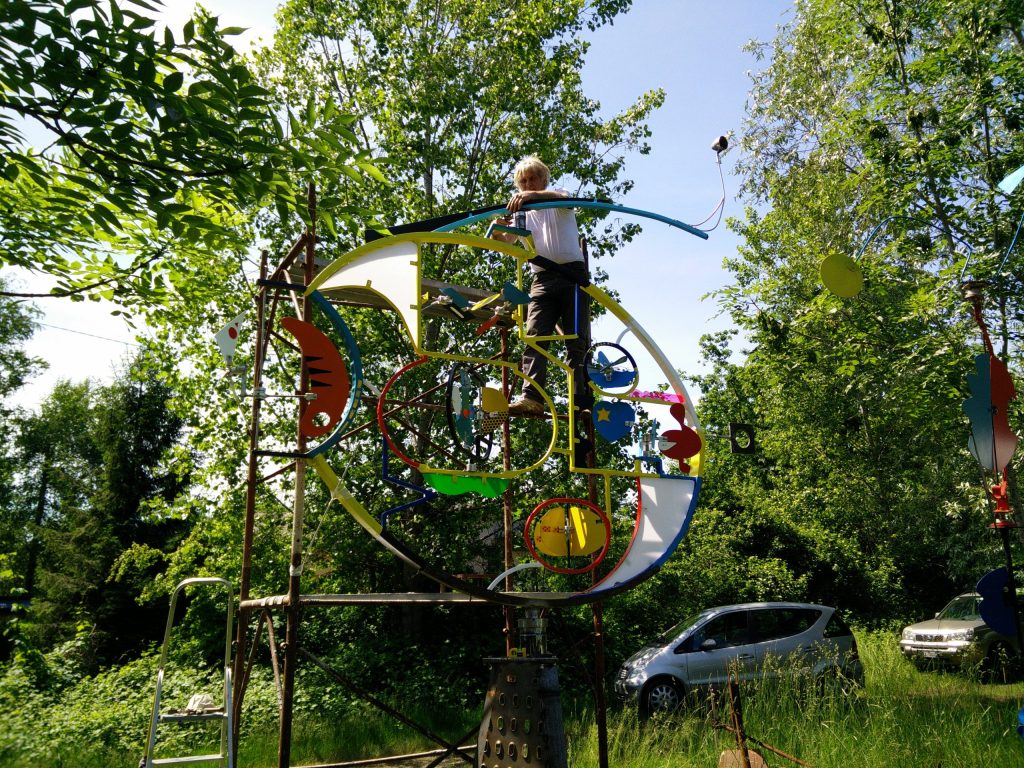
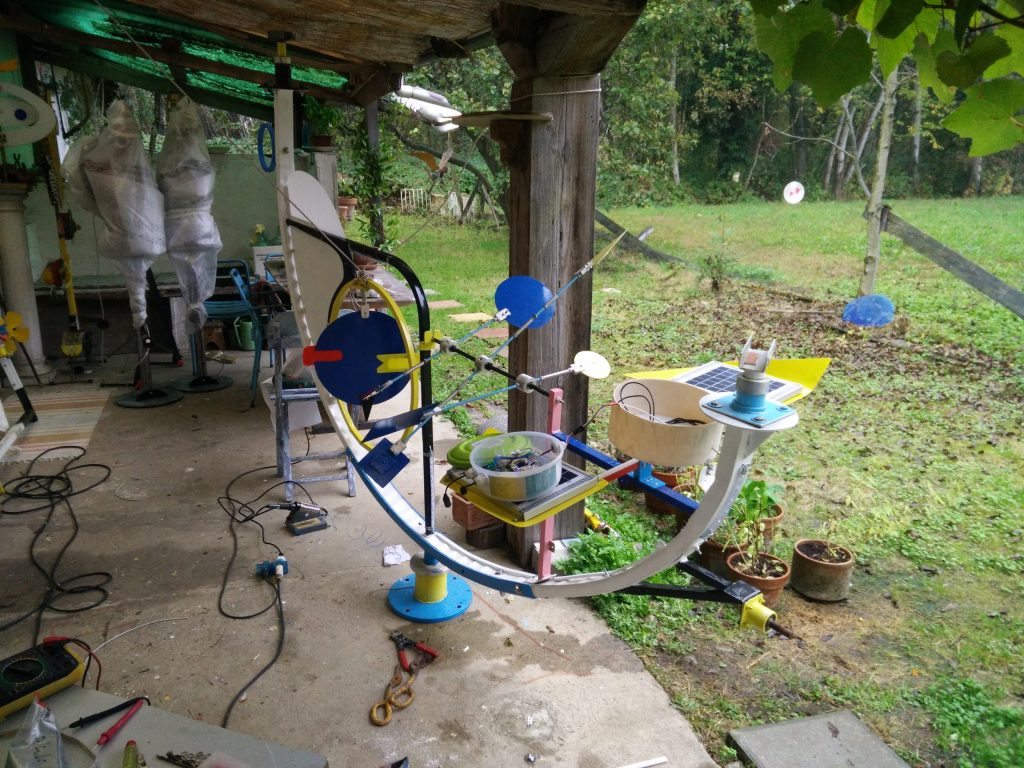
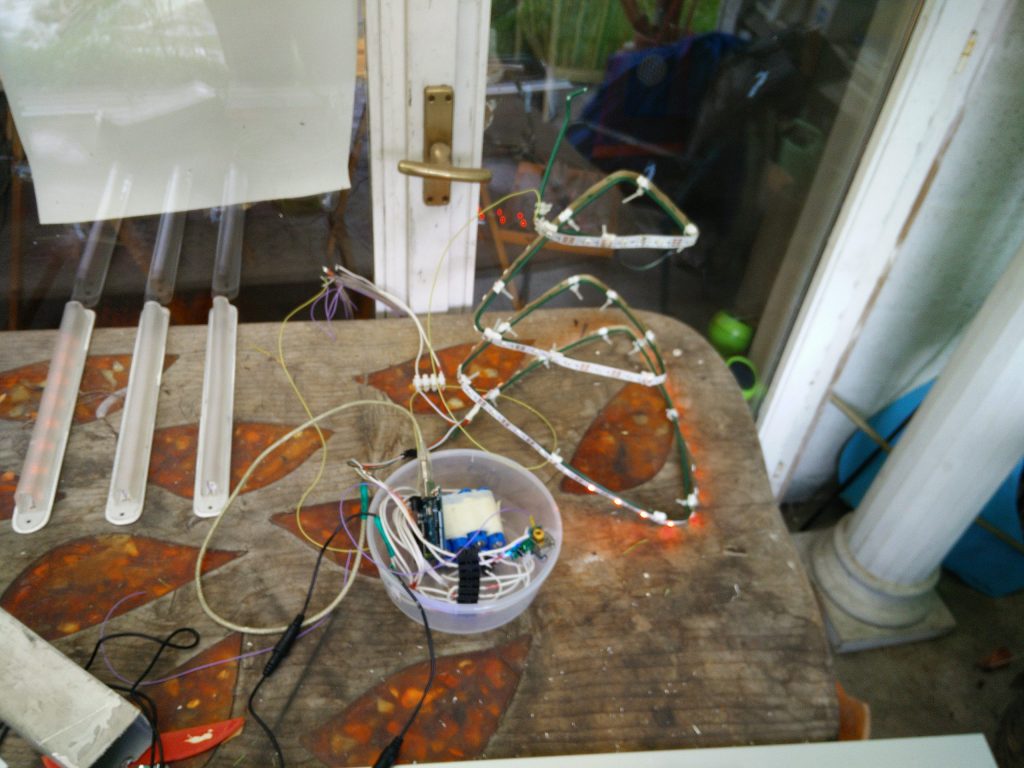
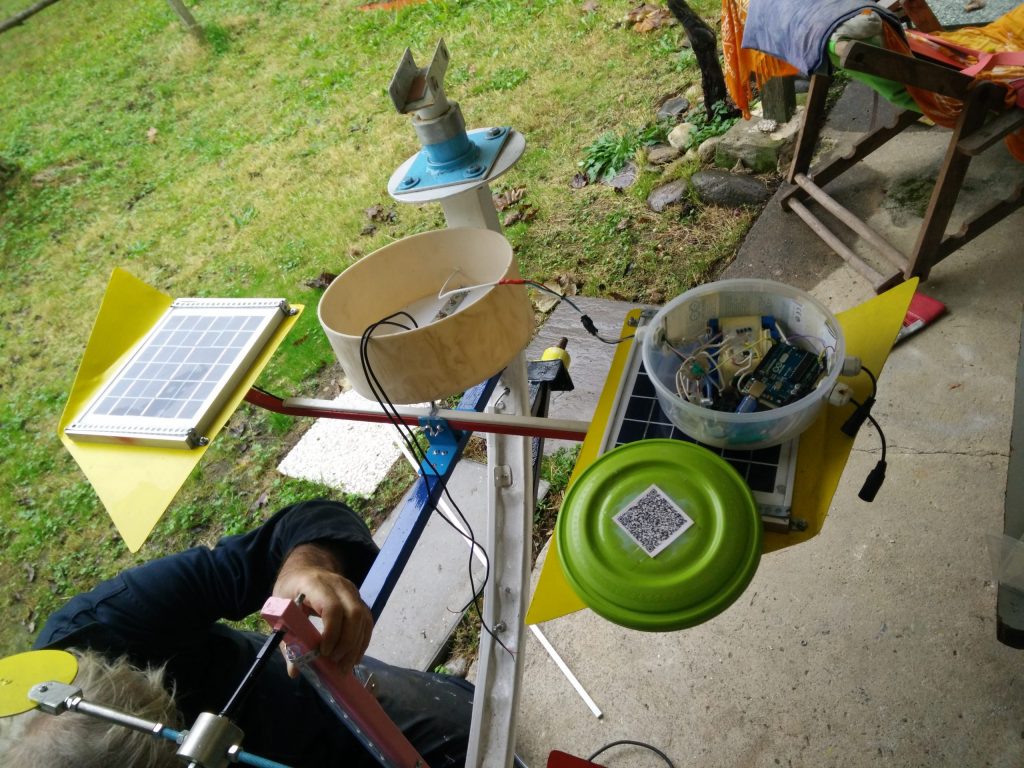
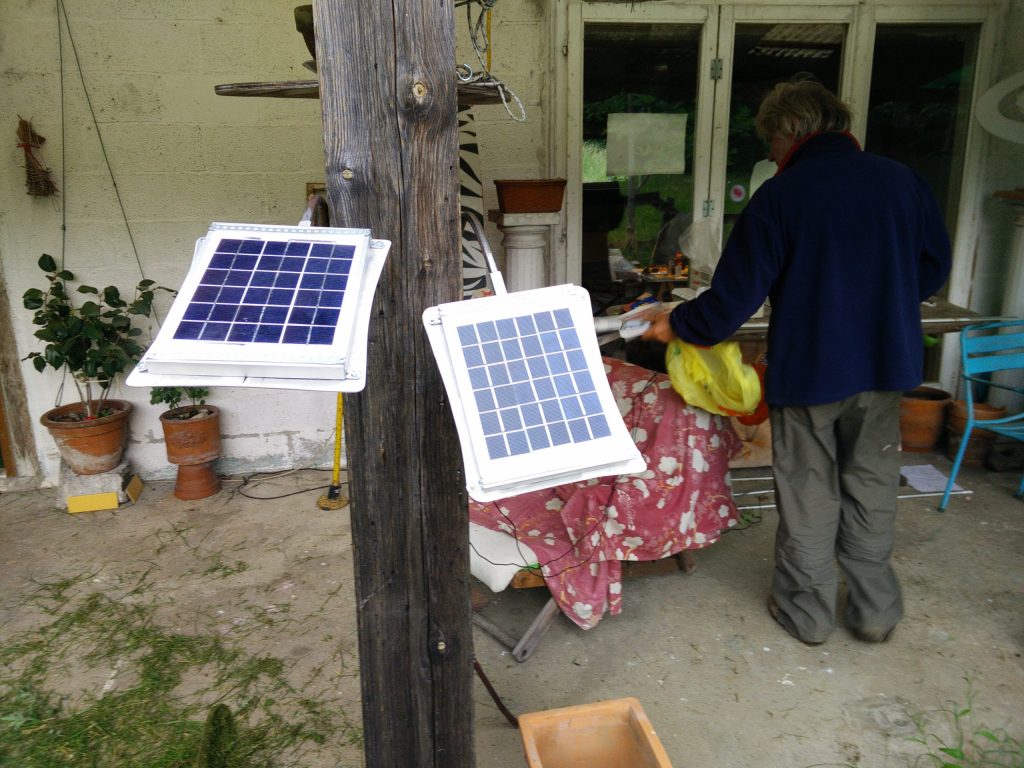
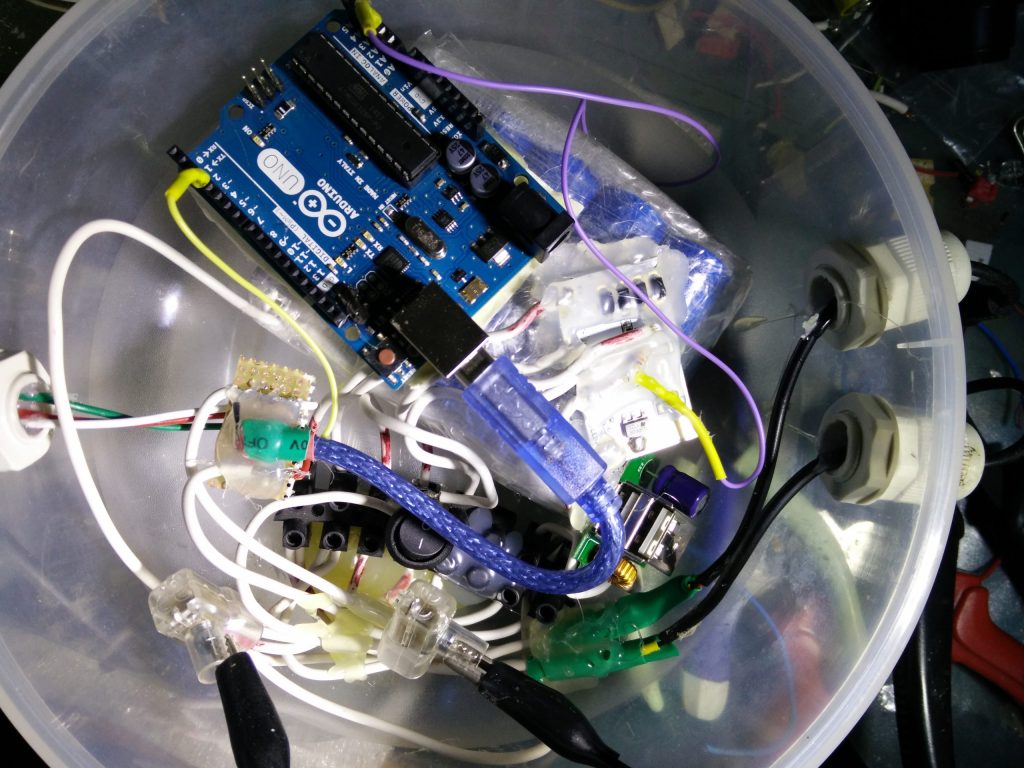
Understanding the artist’s inspiration
Adding parts and behaviours to a creation that is not yours requires several steps. You first need to talk a lot with the artist to understand his inspiration, what he wants to tell people and what he is expecting from your contribution. Then you have to try to put yourself in his shoes and just add your skills to the creative process. When you have some proposal, you have to show and explain with a prototype that clearly explains what you are adding. If the Artist shares your creative view and technical addition, the next step is about the integration. Only the artist knows the shapes and the materials that are consistent with his piece, therefore the requirements for integration should be made clear: wiring, shapes, waterproofing, placing and so on.
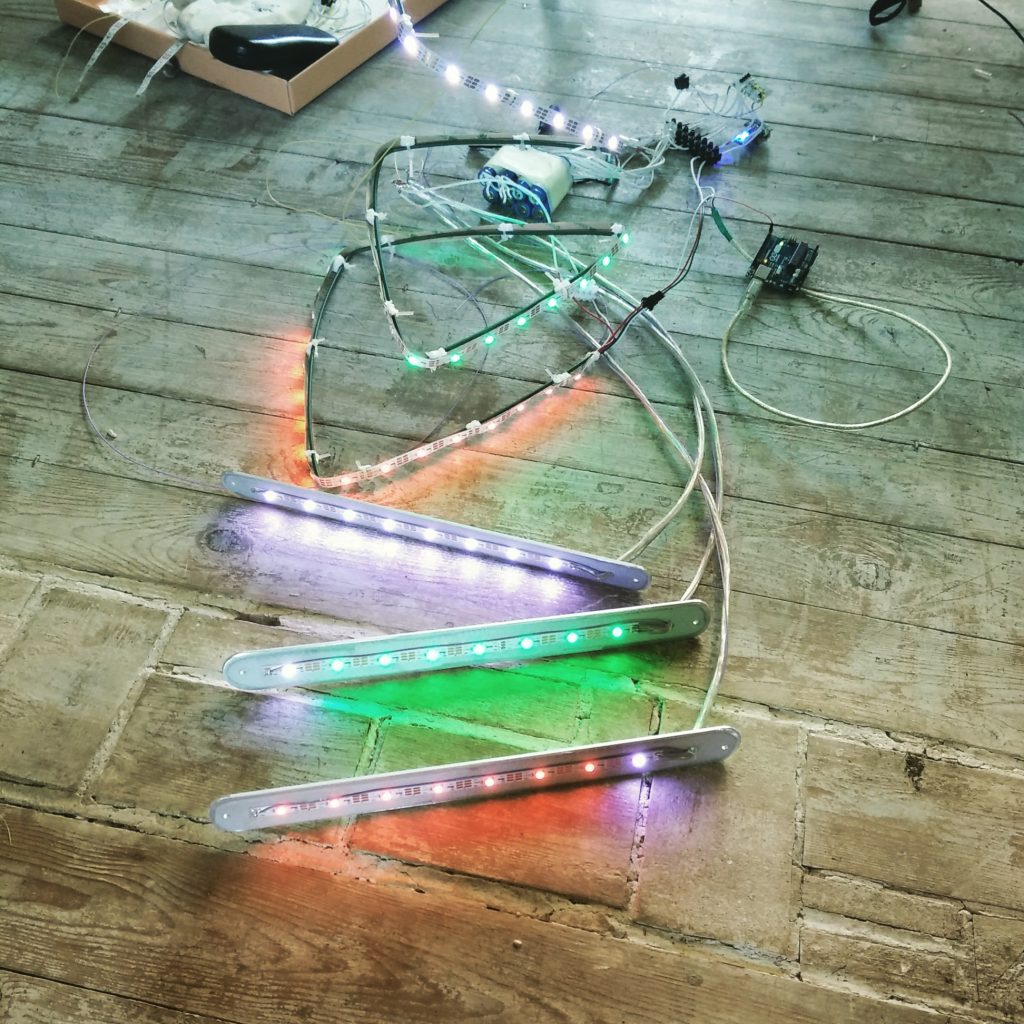
Breathing at night
The idea behind Eolo Sons was to create an entity that looked alive thanks to the moving parts, activated by the God of the wind, or Eolo / Aiolos (Αιολος) in Greek mythology. Usually, the wind is caused by the movement of air masses that rise, heated by the sun, and get replaced by cooler air. Without the sun, winds are less frequent. At night, basically, there is no wind and the sculpture will be still.
How to show that the sculpture was still alive at night?
Lights were my proposal to Claus: smart LEDs driven by an Arduino and a set of solar panels to recharge Li-Ion batteries, big enough to last for a few days of bad weather. The whole system was assembled hacking an outdoor automatic lamp. A small circuit kept the batteries disconnected from the Arduino whenever the solar panels were exposed to light, even the dim daylight of a rainy day.
When the Arduino was powered, it made the four different areas of the SmartLED strip glow and pulse slowly, like a breath, with some accents at random to get the attention of the bystanders. The Arduino was reading the battery charge to manage the brightness and the activity of the lights, implementing a smart energy management to maximize the duration of the lights. Luckily the consumption was easy to manage and a charge could last for several nights.
Resilient and waterproof
Eolo Sons were designed to be placed outside, so the electronics had to be waterproofed and designed to be capable of surviving as many cycles of charge and discharge as possible. The batteries were the most critical part because the over-discharge would compromise the capacity to recharge again. This is why the Arduino was monitoring the charge level and trigger a very conservative power-saving mode waiting for some sunlight to bring the batteries above the safety level again.
A similar setup was developed for two different sculptures. One was with many LEDs placed in three different areas and the supporting triangular base. The second was more challenging because the strips were placed on the main structure itself, requiring the cabling to pass inside the metallic tubes and profiles. The way the SmartLED strips work require that the end of one strip is connected to the start of the following one and just three wires are enough. Nevertheless creating this single line from the first to the last strip required planning and fixing of unexpected issues because not all the connections were pass through between the parts.
After all the strips and parts were connected and the functionality tested, the final placement and insulation was possible. A generous dose of silicone, waterproof grommets and hot glue transformed a round food container into a proper housing for the batteries, the Arduino board and the power management electronics, while all the strips were waterproofed with insulating transparent spray and silicone.
The two art pieces were tested for a couple of months near the Artist’s house before being moved to the final destination.
